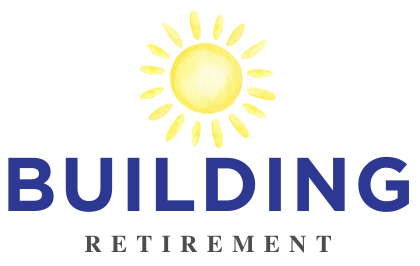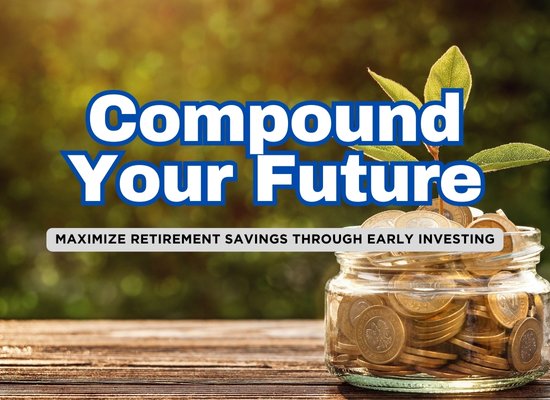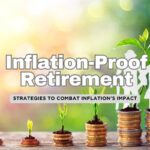Imagine your money working for you every minute of every day—earning interest not only on your original savings but also on the interest that’s already accumulated. This is the power of compounding, often called the “eighth wonder of the world.” The earlier you start saving, the more time compounding has to work its magic. Let’s explore why starting early gives you an unparalleled advantage when building wealth for retirement
1️⃣ Compound Growth Over Time 📈
What Is Compound Growth?
Compound growth occurs when your earnings are reinvested, allowing future interest to be calculated on both the principal amount and the accumulated interest. Over time, this creates exponential growth.
Example:
- If you invest $10,000 at an annual return of 7%, you’ll have nearly $20,000 in 10 years.
- In 30 years, that same investment will grow to over $76,000, without any additional contributions!
Why Time Matters
Starting early gives your money decades to grow. The longer your investments compound, the greater the impact of exponential returns. Even small, consistent contributions made early in life can outpace large, late investments.
BuildingRetirement Tip: Use a compound interest calculator to project your potential savings over time. Seeing the numbers can motivate you to save early and consistently.
2️⃣ Starting Late? You’ll Have to Save More 💰
The Cost of Delayed Saving
The longer you wait to start saving, the harder it becomes to catch up. To illustrate:
- Saver A starts at 25 and contributes $5,000 annually for 10 years, then stops.
- Saver B waits until age 35 but contributes $5,000 annually for 30 years.
By retirement, Saver A often has more money than Saver B, despite contributing for a shorter period, due to the early compounding effect.
The Pressure to Save More Later
Starting late forces you to save much larger amounts to achieve the same goals. Additionally, you’ll have less time to recover from market downturns or other setbacks.
BuildingRetirement Tip: If you’ve started late, focus on maximizing tax-advantaged accounts like 401(k)s or IRAs to boost your savings quickly.
3️⃣ Small Contributions Add Up Over Time 🏦
How Small Savings Grow
Even modest contributions, if started early, can grow significantly over time thanks to compounding. For example:
- Saving just $100 per month starting at age 25 at a 7% return will yield approximately $240,000 by age 65.
- Starting at 35, that same contribution would only grow to around $120,000.
The Power of Consistency
Regular, automatic contributions build discipline and ensure that you’re continually investing, even when market conditions fluctuate. Over time, these small actions result in big financial rewards.
BuildingRetirement Tip: Automate your contributions to savings or retirement accounts. Consistency is key to taking full advantage of compounding.
4️⃣ Reinvesting Returns for Maximum Growth 🔄
Why Reinvestment Matters
To fully benefit from compounding, it’s essential to reinvest your earnings rather than withdrawing them. When you reinvest dividends, interest, or capital gains, your returns begin to generate additional earnings, accelerating growth over time.
Example:
- If you invest $10,000 at 7% annually and reinvest all returns, your balance grows to approximately $76,000 in 30 years.
- Without reinvestment, you only see linear growth, missing out on exponential returns.
Common Reinvestment Options
- Dividend Reinvestment Plans (DRIPs): Automatically reinvest dividends into additional shares.
- Compound Savings Accounts: Earn interest on both your initial balance and previous interest payments.
BuildingRetirement Tip: Choose investments that offer reinvestment options, like DRIPs, to take full advantage of compounding.
5️⃣ Inflation Can Erode Compounded Gains 📉
The Impact of Inflation
While compounding is powerful, inflation can reduce the real value of your returns over time. If your investments earn 7% annually but inflation averages 3%, your net growth is only around 4%. Over decades, this can significantly affect your purchasing power.
How to Combat Inflation
- Invest in growth-oriented assets, such as stocks, which historically outpace inflation.
- Use inflation-protected securities like TIPS (Treasury Inflation-Protected Securities) to preserve purchasing power.
Real-Life Example:
If you save $100,000 and leave it untouched in a low-interest account earning 1% while inflation is 3%, your purchasing power could be halved in 25 years.
BuildingRetirement Tip: Focus on long-term investment strategies that generate returns well above inflation to maintain the value of your savings.
6️⃣ Tax-Advantaged Accounts Supercharge Compounding 📊
Why Tax Deferral or Exemption Matters
Taxes can slow down compounding by reducing the amount of returns available for reinvestment. Tax-advantaged accounts, like IRAs and 401(k)s, allow your investments to grow without immediate tax liabilities.
Key Benefits:
- Tax Deferral: You don’t pay taxes on investment gains until you withdraw the funds (e.g., in a traditional IRA or 401(k)).
- Tax-Free Growth: With accounts like Roth IRAs, your investments grow completely tax-free, meaning no taxes on withdrawals in retirement.
Example:
A $100,000 investment growing at 7% annually for 30 years can reach $760,000 in a tax-deferred account. In a taxable account (with a 20% tax rate), your balance may only reach around $540,000 due to annual taxes on gains.
BuildingRetirement Tip: Max out contributions to retirement accounts to leverage both tax savings and compounding for optimal growth.
7️⃣ Start Early to Reduce Retirement Stress 😌
How Starting Early Eases Retirement Planning
When you begin saving and investing early, your money has more time to grow, which means you won’t have to save as aggressively later in life. Early savers often have the flexibility to retire earlier or enjoy more financial freedom throughout their working years.
The Benefits of Early Planning:
- Less Pressure: Small, consistent contributions made early can grow into substantial wealth, reducing the need for catch-up savings.
- Flexibility: Early savers can afford to take on less risk closer to retirement since their compounded returns have already done the heavy lifting.
- Reduced Anxiety: Knowing your nest egg is growing steadily provides peace of mind about your financial future.
BuildingRetirement Tip: Start contributing even small amounts as soon as possible. Time in the market is more important than trying to perfectly time investments.
8️⃣ Dollar-Cost Averaging Minimizes Market Risk 📉
What Is Dollar-Cost Averaging?
Dollar-cost averaging (DCA) involves investing a fixed amount of money at regular intervals, regardless of market conditions. This strategy reduces the impact of market volatility by spreading out your investments over time.
How It Helps with Compounding
- You buy more shares when prices are low and fewer when prices are high, which can lower your average cost per share over time.
- Consistent investing allows your contributions and returns to compound, even in fluctuating markets.
Example:
By investing $500 monthly over 30 years, you benefit from market downturns by buying more shares at lower prices, which boosts long-term growth when the market rebounds.
BuildingRetirement Tip: Automate your contributions to retirement accounts or investment portfolios to consistently apply dollar-cost averaging without emotional decision-making.
9️⃣ Compound Growth Accelerates Near Retirement 🚀
The Snowball Effect
As your investments grow larger, compounding begins to accelerate rapidly in your later years. For example, the difference between a 30-year and a 35-year investment period can often be hundreds of thousands of dollars due to the final stages of exponential growth.
Why Staying Invested Matters
- Pulling your money out too early can cause you to miss out on this critical growth phase.
- Even after retirement, allowing a portion of your portfolio to remain invested can continue to generate compounding returns.
Example:
A $500,000 portfolio earning 6% annually can grow by over $300,000 in just 10 years due to compounding, even without further contributions.
BuildingRetirement Tip: Avoid withdrawing large amounts from your retirement accounts early. Let compounding continue to grow your wealth in your later years.
🔟 Consistent Savings Beat Market Timing ⏳
Why Timing the Market Doesn’t Work
Many investors try to time their entries and exits based on market predictions, but this is a risky strategy. Markets are unpredictable, and missing just a few of the best-performing days can significantly reduce long-term returns.
The Power of Staying Consistent
- Historical data shows that markets generally trend upwards over time, despite short-term volatility.
- By saving and investing consistently, you benefit from both good and bad market periods, allowing compounding to do the work.
Example:
An investor who misses just 10 of the best-performing market days over a 20-year period can lose out on nearly half their potential returns.
BuildingRetirement Tip: Focus on time in the market rather than trying to time the market. Consistency wins in the long run.
1️⃣1️⃣ Reinvesting Dividends Supercharges Growth 💸
What Are Dividends?
Dividends are payments that companies make to shareholders as a portion of their profits. Many companies, especially large and stable ones, offer regular dividends. Reinvesting these payments instead of withdrawing them can significantly boost your portfolio’s compounding power.
How Dividend Reinvestment Works
- Automatic Growth: Dividends are used to purchase additional shares, which in turn generate more dividends.
- Compounding Effect: Over time, reinvested dividends can account for a substantial portion of your overall returns.
Example:
If you invest $10,000 in a dividend-paying stock with a 3% yield and reinvest the dividends, your balance could nearly double in 25 years, even without capital gains.
BuildingRetirement Tip: Consider reinvesting dividends in tax-advantaged accounts to avoid immediate tax liabilities and maximize compounding.
1️⃣2️⃣ Avoid Lifestyle Creep to Maximize Savings 📉
What Is Lifestyle Creep?
Lifestyle creep occurs when your spending increases as your income rises, preventing you from saving as much as you could. This can slow down your ability to build wealth through compounding.
How It Affects Retirement Planning
- Reduced Savings Rate: Higher expenses mean you have less money to invest and compound.
- Longer Retirement Horizon: Increased spending habits may require you to save more to maintain your lifestyle in retirement.
How to Prevent It
- Automate Savings: Increase your savings rate whenever your income rises.
- Prioritize Investments: Avoid upgrading your lifestyle until you’ve met your financial goals.
BuildingRetirement Tip: Follow the “50/30/20 rule” to allocate your income—50% to needs, 30% to wants, and 20% to savings and investments.
The power of compounding is one of the most effective tools in building a secure retirement. Starting early, staying consistent, reinvesting earnings, and managing risks like inflation and lifestyle creep can make the difference between financial freedom and financial stress in retirement. With time on your side and a disciplined approach, compounding can transform even modest savings into a substantial retirement nest egg. The key is to start today—every dollar invested now is a step closer to your future goals.



